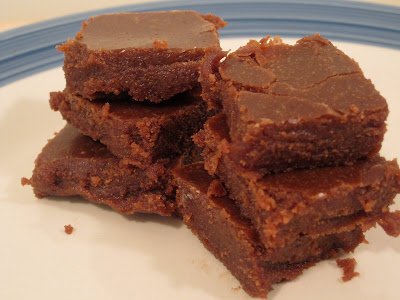The other day something unprecedented happened: I ran out of flour. I may not always have all the random ingredients required for my recipes, but I always have flour. And sugar. And butter. I have an entire box full of basic baking supplies that I always keep stocked so that I can whip up something tasty at a moment's notice. Somehow I had let my flour supply dwindle into nothingness. Disaster!
Rather than going to Safeway to restock, I decided to Google recipes that didn't require flour. (It's a million degrees outside, I refuse to go out if I can avoid it.) The first recipe that popped up: flourless chocolate cake. How could I have forgotten about flourless chocolate cake?
This was probably the easiest, least fussy cake I've ever made. Melt some butter and chocolate, throw in some sugar and eggs and cocoa, and bake. 20 minutes later, a rich, sinfully chocolate-y dessert pops out of the oven. Mmm, chocolate.
I considered throwing in some ice cream, since I had vowed to always use ice cream in my cakes from now on. But, I figured that the cake would be plenty moist and rich as is, so I changed my mind. If it ain't broke...
The cake was a success! Dense, rich, and intensely chocolate-y. Delicious by itself, but even better with a little caramel drizzled on top.
Recipe from Epicurious.
















